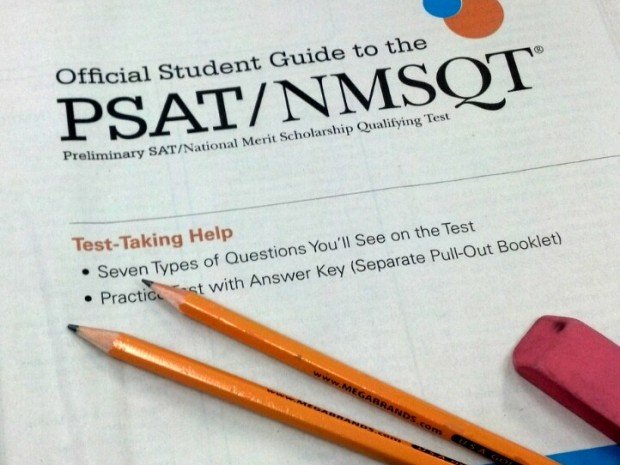Should merit scholarships consider income? NO
The current NMSQT system allocates scholarships by state, others propose a system based on income brackets
Courtesy of Anthony-James Green
Juniors recently recieved results from the NMSQT, which gives merit scholarships.
As high school juniors from across the nation begin receiving College Board’s Preliminary Scholastic Aptitude Test/National Merit Scholarship Qualifying Test (PSAT/NMSQT), many are eager to discover whether their score will qualify for a run at National Merit Scholarships in the Semifinal round.
The PSAT currently features cutoff scores based purely on approximating the 99th percentile of test takers within each state; about an estimated 16,000 out of this year’s 1.5 million test takers will qualify as National Merit Semifinalists, allowing them to further compete for College Board’s 8,900 coveted merit scholarships. Cutoffs for the class of 2015’s National Merit Semifinalist recognition vary greatly state by state, where West Virginia and North Dakota had the nation’s lowest cutoff score at 201 and Washington D.C. and New Jersey the highest at 224. Over the years, many have criticized the state cutoff system, as students from states with higher cutoffs would have qualified but did not based on geographic location. Although the current PSAT/NMSQT’s individual state cutoffs seem controversial, this and many other variations of test and cutoff administration are far superior to creating cutoffs based on personal and family income.
The current system ensures that the spread of National Merit Scholars in any given year will be proportionate to the number of people who take the PSAT within in each state. In comparison with almost every other nationally administered standardized test, however, others use standardized testing to compare students across the nation with respect to one single standard.
In addition, the PSAT is becoming less of an intellectual indicator of college preparedness, as more people now devote increasing amounts of time and money to obtain higher scores.
Given all of this, however, we must ask ourselves how basing the cutoffs off of family income will change the scope of the PSAT. For starters, implementing cutoffs based on parent income (eg. students whose parents have combined income of $0-$20,000 must score 200, parents who have combined income of $20,001-40,000 must score 205, etc.) would make the test inherently need based rather than merit based, thus further defeating the purpose of the test and the program’s goal of equity for all test takers. This new system would still not truly compare peers based on their academic performance to others in the nation; rather than blocking students and comparing scores by state, students would be evaluated by an equally variable and significantly more systematic variable — income. If anything, creating cutoffs solely dependent on parental income would encourage students and families on both ends of the income spectrum to invest more money in PSAT preparation due to newfound expectations, and as a result the PSAT would serve as an even weaker indicator of college and intellectual preparedness.
Creating cutoffs based on income would not only make the entire process much more complicated, but there would exist more flaws than the current system possesses. To implement such a system, students would be required to submit tax returns and other similar forms in order for their scores to even qualify for further recognition; in order for the effects of an income barrier to effectively have a purpose, it must be combined with individuals’ personal family background, personal beliefs, and other variables to eliminate the “bias” of sorting by state. In addition, based on comparing family income alone, one’s income in a particular area could result in drastic differences if that person were to live in another part of the nation due to the difference in cost of living.
For example, a student whose parents make a combined $50,000 per year could be considered anywhere between poor and well-off middle class. As a result, if the PSAT were to attempt to benefit the less socioeconomically privileged, it would fail to take into account the differences in geographical location and could potentially hinder more students’ chances of earning Semifinalist honors. In our hypothetical situation, not only would the PSAT/NMSQT staff lack the time and resources that go into processing a nationally administered test, but such a system would also compromise its justification for cutoffs with arguably more arbitrary standards.
Putting our differences aside, If the PSAT’s main flaw is its current ability to measure and predict future student success, changing the cutoff realistically does not solve anything; College Board ought to consider a change in the actual test itself.
Your donation will support the student journalists of Palo Alto High School's newspaper

